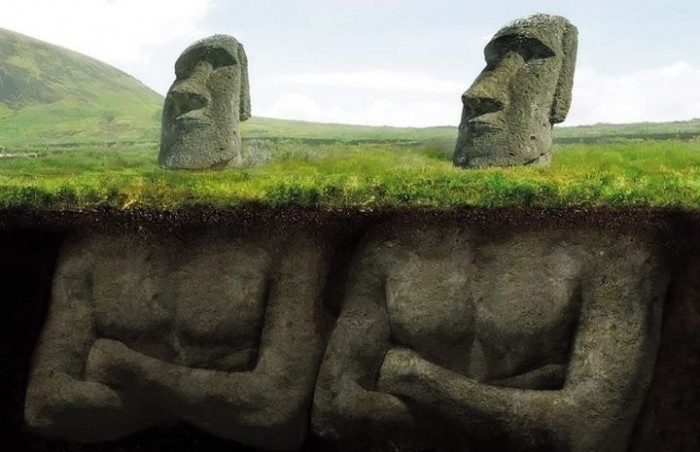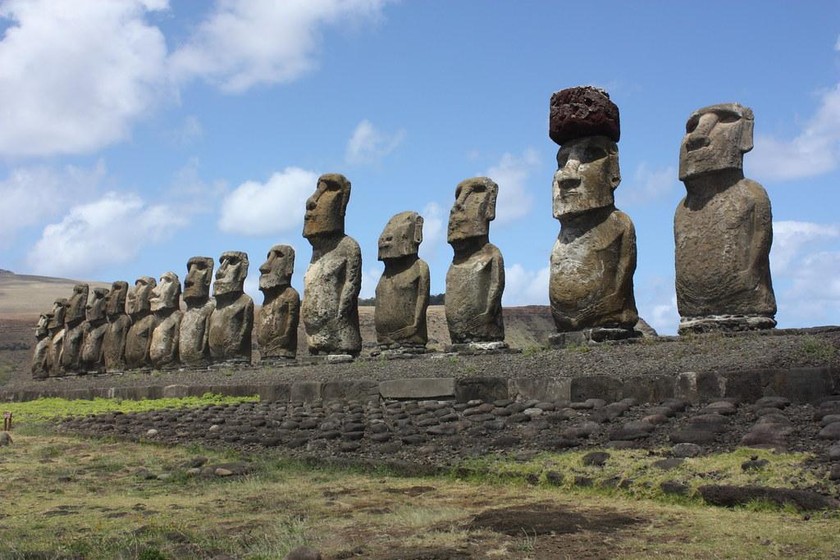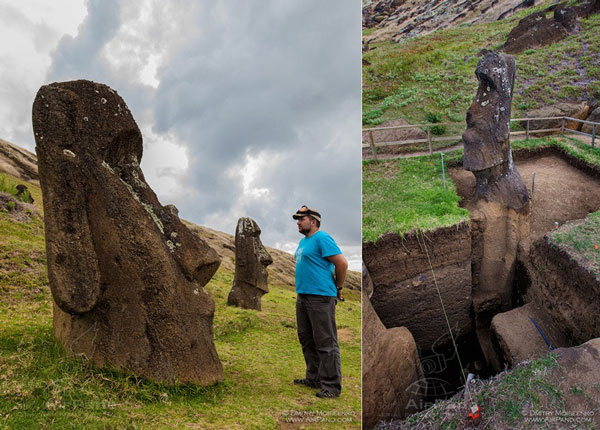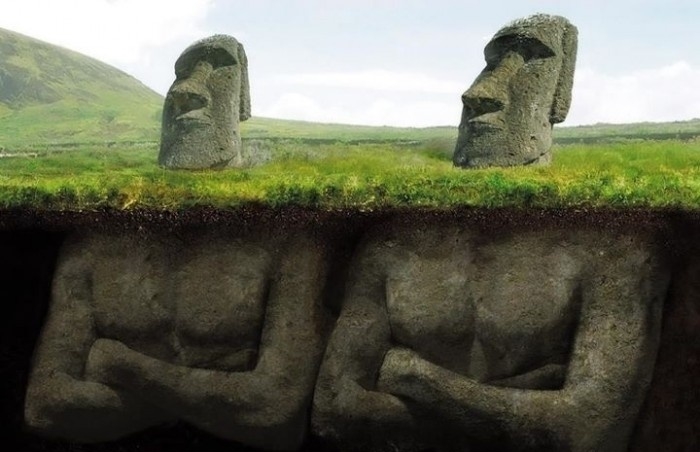Easter Island, known for its iconic and enigmatic head statues, has long fascinated travelers, historians, and archaeologists alike. These statues, known as Moai, are a symbol of mystery and ancient craftsmanship. While most people recognize the towering heads that dot the landscape, few are aware of the astonishing fact that these statues actually have bodies buried beneath the earth.
#### Unveiling the Hidden Bodies

Recent archaeological excavations have revealed that the Moai statues are not just heads, but complete figures with torsos and lower bodies. The buried sections of these statues are often intricately carved with detailed designs that have been preserved remarkably well. This discovery has shifted the understanding of Easter Island’s ancient culture and the monumental efforts involved in creating these statues.
#### The Significance of the Moai Statues

The Moai statues were crafted by the Rapa Nui people between the 13th and 16th centuries. These statues are believed to represent ancestral figures and were likely created to honor important leaders or deified ancestors. The sheer size and number of the Moai, some of which are over 30 feet tall and weigh several tons, demonstrate the sophisticated engineering and artistry of the Rapa Nui civilization.
#### How the Bodies Were Discovered

The discovery of the Moai’s bodies began with the work of the Easter Island Statue Project (EISP). Led by archaeologists Jo Anne Van Tilburg and her team, the EISP aimed to uncover more about these mysterious statues. Through meticulous excavation and analysis, they found that the heads are just the tips of much larger statues buried up to their shoulders. This finding was not entirely unexpected, as earlier reports and local legends hinted at the existence of buried bodies.
#### Why Were the Bodies Buried?
There are several theories as to why the bodies of the Moai statues were buried. One theory suggests that over time, natural erosion and sedimentation gradually covered the lower parts of the statues. Another theory posits that the Rapa Nui people intentionally buried the bodies to protect them from environmental elements or to stabilize the statues as they were moved into place.
#### Implications of the Discovery
The revelation that the Moai statues have bodies has profound implications for our understanding of Easter Island’s history and culture. It highlights the complexity of the Rapa Nui society and their impressive capabilities in statue carving and transportation. Moreover, it opens up new avenues for research and conservation efforts, as the buried sections of the statues need to be studied and preserved.
#### Visiting Easter Island Today
For those who visit Easter Island, the sight of the Moai statues is awe-inspiring. Guided tours often include explanations of the latest discoveries and insights into the island’s history. Seeing the statues in person, especially with the knowledge that they are complete figures, adds a new dimension to the experience.
The Moai statues of Easter Island are more than just heads; they are full-bodied figures that have been partially hidden for centuries. This discovery has enriched our understanding of the Rapa Nui people and their extraordinary achievements. As excavations continue, who knows what other secrets this remote island might reveal?

